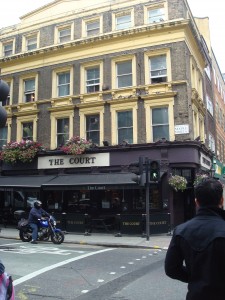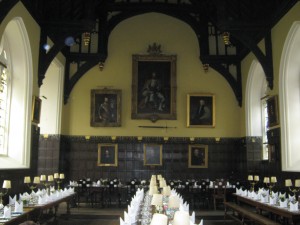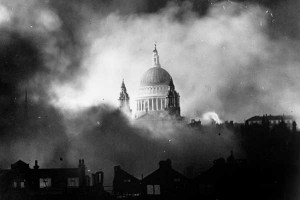See Burnham Market for photos from our presentation.
A short summary of our presentation:
How to Get there: 25/35 Bus to Norwich Railway; Norwich to Sheringham or Kings Lynn; Coast Hopper Bus to the Burnham Market stop
About the population: People who live here are in a higher socioeconomic bracket. Named cottages, private businesses, and expensive prices denote richer clientel. Known also as Chelsea-on-sea, the area is a popular place for seasonal homes.
To Do: Shopping, boating, musical events, Holkham Estate Tour, Bygone museum, beach. Most of the area’s attractions are dictated by tourism or summer events.
History: Named for it’s proximity to the river Burn, the town is a culmination of three smaller villages. It’s most famous resident is Horatio Nelson.
Shopping: Shops in Burnham Market are all independent merchants with relatively expensive pricing including a butcher, a baker, several independent clothing stores, a vintage shop, cafes, and several art galleries. Most stores boast locally procuded goods and handmade items. The one chain store in the main shopping area, Jack Mills, sold preppy, fairly expensive clothing as well, but targeted a slightly younger consumer.
Image: Ivy creepers, calculatedly careless shop designs (i.e. the inside of the post office), and hand painted signs creating the image of a quaint, old time village. Clerks gave customers individualized attention and boast hand made items to create a more personalized appearance. The Jack Wills emblem, a duck with a top hat and cane above the words “Fabulously British” exemplifies the image of Britishness that Burnham Market illicts, the duck appealing to a good humored, modern crowd, and the top hat and cane hearken back to moneyed and aristocratic roots.
For more information about Burnham Market http://www.burnhammarket.co.uk/
Tags: 2010 Jesse · 2010 Luke · 2010 Melissa
September 21st, 2010 · No Comments
The Brits pour money into their precious museums, further proof to my idea that the Brits hold their rich and storied history above all things in this fine country. The Museum of London is probably the best example; a simply laid out but large museum with easy access to the public and several treasured pieces of London history contained within its walls. Like the Museum of London, most museums are easily accessible and a majority of them are free to the public, however it seems like the museums they offer are catered to a good balance of Brits and tourists alike. While walking through a museum like the British Museum or the National Portrait Gallery, it is common to hear a slew of accents from every corner of the room. Italian, spanish, english, you name it, these people are in the museums. Of course this kind of museum experience can only come from the British government pouring tons of money into these places, making them into a piece of history themselves.
The history on display in the museums isn’t only that of the Brits, however. I am sure it took millions upon millions of dollars to acquire the historical objects contained in museums like the British museum. Perhaps this is a testament to not only the Brits appreciation of their own history, but also of the history of the world. London is without a doubt, one of the most international cities in the world. Tourists come from all over to see the sights and people from all corners of the globes live tucked away in various corners of London. All these points lead me to believe that Londoners also take great pride in acknowledging how they themselves are linked to international history and will pay big bucks for precious artifacts to be moved to their museums.
The museums themselves seem to operate like any other public establishment in the city of London. The feeling of being pushed around from queue to queue is ever present, even in a place like a museum. The result is that you kind of have to rush yourself from museums, or as a fellow classmate said in their blog recently you have to learn to “skim” museums. It took me ten minutes just to get a good view of the Rosetta Stone because of all the people crowding around, and everyone seems to have you on a two minute timer to have your look and then move on. Even in a place like the National Portrait Gallery, I got the feeling that if I spent too much time looking at a painting or sitting on a couch (the green leather was incredible) I was going to be the recipient of dirty looks from every direction. Despite being invisibly queued up in most sections of museums, there is usually enough to experience for you to get lost for days.
Overall, the museums are definitely a great aspect of London and I believe that the fact that they are subsidized is a very good thing. It keeps tourists coming and it keeps the English aware and proud of their history and their knowledge of others’. The museums of London helped me to appreciate (like a good Londoner) the value of a trip down history lane.
Tags: 2010 Benjamin
September 20th, 2010 · 1 Comment
Rather than spend another post discussing curating practices or the pros and cons of government subsidies for museums, I wanted to write about the behavior I’ve observed in visitors to museums because, as a psychology major, this is what interests me. First, one can definitely tell the difference between English visitors to museums and tourists visiting museums. Tourists walk around looking up or looking sideways, gawking and paying no particular attention to where they are going. There was woman in the Map exhibit in the British Library yesterday who was wheeling around a suitcase behind her as she went through. Madam really, you are currently taking up enough space for three people. This doesn’t surprise me much, as I’m used to tourists in America being clueless and gawking as well. What I find more fascinating is the behavior of British visitors.
First, English visitors seem to come to museums with a specific purpose in mind. They seem to know exactly what they want to see and exactly what they want to learn or get out of their trip and proceed to the appropriate location efficiently. I’ll admit that it’s true that British visitors, especially Londoners, are at a bit more leisure to do this, since they live here and can return as often as they like while we tourists need to cram in as much as possible in a short period of time. In addition, some of these people are students with notebooks who must be on assignments concerning a certain painting or exhibit. An interesting mission that I’ve seen English museum visitors pursuing is educating a child. I’ve seen this several times, but I’ll share the example of a mother and son that I saw in the National Portrait Gallery. The mother had a notebook and was trying to convince the son (who seemed about 4 or 6 years old) to choose a picture he liked and try to draw it to “show Daddy later.” The son was reluctant and threw a few fits (as big of a fit as an English child would throw) but the mother was very persistent and kept telling her son, “We’ll look at just one more, one more picture.” When I saw them again later on, the son seemed a bit more engaged, but I just thought it was interesting that parents would bring their children to museums with such a structured purpose.
The second behavior that I’ve observed seems to relate to the English privacy rules and the social dis-ease mentioned by Kate Fox. I’ve noticed that if an English person is looking in a case or at a sign, and I walk up next to them to look at the same object, they will either apologize and leave, or give an embarrassed smile and leave. I still don’t really understand what they are apologizing for, but it’s almost like they think more than one person cannot occupy the same object (or 3 foot radius) as another person, like each person needs their time alone with whatever sign they are reading. I remember looking in the Museum of London at the Docklands at the hanging bird cage thing in which they would put pirates for birds to come eat them and a small child ran in front of me, pressing his nose on the glass, and asking his father to come look. The case was rather large, the print on the sign rather large, and the child rather short. He was not obstructing my view at all, but the father scolded him “Don’t stand there; the lady is trying to look.” I protested and said something like “Oh don’t worry he’s fine” to which the father gave an embarrassed laugh and quickly walked away. This behavior seems strange, awkward, and overly polite, but it makes some sense when we apply what we’ve read in Fox, and in light of other examples of social dis-ease that we’ve experienced in England. I suppose I prefer it to the behavior of American tourists, who will actually obstruct your view of something, and run you over with a suitcase while they’re at it.
Tags: 2010 Kaitlin
September 20th, 2010 · No Comments

While I do not think anyone has encountered a pub serving beer out of strawberry-pink china mugs like George Orwell describes in his article The Moon Under Water, I think Orwell’s definition of what makes a pub great rings true today. It is less about the alcohol or food served, and more about the feel of the place. A pub’s atmosphere is what makes it great, and every pub I have visited certainly has its own distinct personality. From the Jack Horner’s somewhat upper-class, snobby atmosphere (the presence of poached salmon on the pub menu was rather unappealing) to the Marlborough Arms more casual, friendly interior, each pub in London seems to offer something slightly different.
The fact that each pub feels different is actually a little surprising, as I’m sure many have noticed the fact that there appears to be about five pub “companies” that own a bunch of different places around London. Every new pub I go into at this point, I recognize the menu because it is shared with a least twenty other pubs. Luckily, as Orwell points out, a pub is not based on food and drink alone. No, the differences in the pubs are really in the clientele they serve. Younger pub-goers and tourists make a place much more rambunctious and bar-like, while older patrons and locals will make a place more casual and homey.
The two strongest indicators of who will frequent a certain pub, and as a result dramatically change its atmosphere, are location and closing time. The more off-the-beaten-path a pub is, the less likely tourists and young people will go there. These pubs tend to be much calmer and feel like old institutions. However, if a pub is on a main road or near a big landmark, you can bet that the pub will be packed and playing loud American music, like the Rocket on Euston Street, a few blocks from the train station. Closing-time might be an even stronger indicator. Many of us have become fans of The Court on Tottenham Court Road for its 2 a.m. closing time, and it’s clear that other young twenty-somethings are attracted to the pub for the same reason. As a result, The Court is much louder and more bar-like than other pubs that close by 11 p.m.

I and many of my peers have tried adhering to Kate Fox’s pub rules, with mixed results. Generally, the more off-the-beaten-path and traditional the pub, the more likely you could buy the owner a drink or observe an invisible queue. You are also far more likely to see actual regulars at one of these pubs than you would at, say, The Court or The Rocket. Regulars cannot easily fit into one category, but you can usually spot them out by their attitude. All of them seem to congregate close to the counter, and are visibly more relaxed than other patrons. Hopefully, we will someday match the relaxed tone of these regulars. Until then, I will continue to observe pub rules and try to figure out where they actually apply.
Tags: 2010 Andrew
[kml_flashembed movie="http://www.youtube.com/v/nZBtfNL7dP4" width="425" height="350" wmode="transparent" /]
Video on YouTube
After we got off the Tube at Covent Garden, we were a little disorientd so we asked a somewhat friendly-looking woman on the street for directions. In an eominous harbinger of our afternoon to come, she responded- in a dead flat American Midwestern accent- “Oh, I have no idea, it’s my first time here, too.” We soon realized the market was located just down the street. Within five minutes of entering, we found what the market was really about: a place for tourists and middle- and upper-middle-class locals to window shop and buy quasi-luxury items.
The first thing that surprised us about the market was the near total lack of ethnic food vendors. We actually only saw one food vendor, a fruit cart, despite the title Apple Market above the carts. Items for sale included handbags, jewelry, soaps, and other window shopping items. All of these were conspicuously advertised as “handmade,” creating a sense of authenticity for shoppers. Several of the vendors also sold paintings of the more traditional parts of London; items specifically for tourists. One vendor even had posters of American stars (i.e. Audrey Hepburn and Marilyn Monroe). These particular actresses are icons of higher class, which we felt reflected the classes that the market meant to attract. The area seemed to contain a lot of nouveaux rich items that would appeal to the middle- and upper-middle classes, as Fox suggests in Watching the English. The area seemed mostly designed for window shopping and watching free entertainment.
One of the entertainers, a melodramatic unicyclist, performed in front of St. Paul’s Church. There were two homeless men on the steps that most people seemed to be ignoring. The other historical area near the site was the Royal Opera House. To add to the artistic atmosphere, flags and various paintings hung along the market’s rafters.
We were surprised to find that most of the people in the area were white considering the amount of diversity in London. The people also seemed religiously neutral, compared to others we’ve seen elsewhere in London—we did not see any religious indicators, such as headscarves or yamoulkas.
The buzzword for the afternoon was definitely “homogeneity.” The market and its proprietors guarded the blandness of the place with extreme zeal. Ethnic restaurants (often chain restaurants) brandished flags with their countries of origin as if to make it obvious for tourists. A highlight of the unintentional comedy that this produced was a pub that hung a sign in the window saying: “Football colours are not permitted.”
The shops surrounding the market were equally lacking flavor. Many of the retailers were large American companies, such as: Oakley, Build-a-Bear, and Disney.
Amidst all this complaining about Covent Garden, it should be mentioned that the area felt extremely safe. We saw more young children in four hours today than we have seen in the fourty-eight hours we have been in London. The area was very family-friendly and also seemed to be a popular date spot for couples in their 30s and older. Also, the market was not totally soulless, as we had two fairly amusing encounters. First, we spotted a large group of men in rugby jerseys wearing obviously fake moustaches and Afro wigs. We felt compelled to ask them what drove them to do this, and the answer was that there was a rugby final at Wembley much later in the day. They came to the market to get drunk (although they seemed pretty well-behaved and claimed that they were neutral in support). Second, one of us gave in to the entreaties of a very haggard street salesman (wearing a lanyard with a card that said “WORKING, NOT BEGGING.” The card was not as unnecessary as it sounds) and bought a magazine from him. As he was clearly doing very poor business, we didn’t feel that bad chatting him up for ten minutes or so, a conversation dotted with some spectacular moments. The most memorable line was “You’re from the States then? You have Christmas, we have Christmas. But I have one big question: What the fuck is up with Thanksgiving? Seems like a bit of fraud to me.”
Tags: 2010 Dennis · 2010 Jesse · 2010 Mary · Markets
September 18th, 2009 · 2 Comments
Being that I was a part of the group responsible for doing the Pubs walking tour, I got to see a lot of pubs while in London. Some of them were big some of them small, some new and some old. However, all of them had a large and often loyal clientele.
One of the things that I feel makes the pub culture so strong in the U.K., in comparison to the U.S. and many other countries is the fact that EVERYTHING except the pubs close before 8 pm (6 pm in Norwich). Nightclubs are also open past 8 pm, however since coming here I have learned that most Brits cannot dance. What does one do after 8 pm if they are bored and wanting to socialize with friends? The only thing there is to do: go to the local pub. If one is craving a bite to eat past 8 pm, pubs are some of the few places still left open. From a visitor’s perspective I often find myself wondering why things cannot be open later. Yet, I can see why this might be nice from a resident’s perspective. If I lived in London I would be very happy to never have to work the late shift at work, and to be able to leave work by 8 and head off to meet my friends at the local pub so I could grab a meal and unwind after a day at work. The real truth is that Americans work too much, are too uptight, and need to live their lives more like the Brits or the Europeans. This maybe far fetched, but I believe that drinking in bars and pubs is looked down upon in the states partially because it is associated with laziness and carelessness. No matter how much it annoys me that nothing in Great Britain is open late I realize that it is better for the welfare of the people. In fact, many of the pubs I visited were filled with people who had just left work and walked to the nearest pubs with their coworkers and friends. The Viaduct Tavern, on Viaduct Holburn, was always filled to the brim with the bankers and lawyers that worked in the area, so that when you approach the pub after 5 pm all you can see is a huge crowd of people all wearing suits.
Another thing I found interesting was how the selection of drinks and how the selection was displayed varied from pub to pub depending on their clientele. Pubs that were in tourist areas tended to have more mixed drinks like with names like “Sex on the Beach” and “The Slow Kiss”. These pubs also had the lists of their drinks in a menu or written on the wall. The tourist’s pub also has music, a jukebox, pool tables, and/or electronic games. The more traditional pub and those that severed the locals more than tourists had ales, lagers, ciders, and liqueur but no drink menu and no mixed drinks. In pubs like these the price of the drink you are buying is always a surprise until they ring you up. Also, some of the older traditional pubs have no music, no pool tables, and no games. These differences show how tourism has influenced the London pub culture. I hope to explore the more authentic British Pub more while I am in Norwich.
Tags: Rebecca
I try not to be biased against a museum’s collection because of its particular layout, especially one as restricted as Sir John Soane’s, but I feel that Mr. Soane’s museum was just too prohibitively small to have the kind of impression that he himself wanted it to. The stated purpose of John Soane (an architect by trade) turning his home into a museum was to “preserve [his] house and collection for the benefit of ‘amateurs and students’ in architecture, painting and sculpture.” Rather than gain any further concrete knowledge of these subjects at the Soane, I felt cluttered by what just instinctively felt like cartoonish opulence.
The signage was so sparse that I learned about one in ten of the individual objects rather than collections as a whole and how they relate to Soane or his areas of expertise. I doubt an audio tour would have even been able to cover much of the collection, either. I did get a sense of the importance of Mr. Soane’s work itself, but even this part of the museum consisted of many of his drawings gave me no sense of the arc of his career or his greater role in architecture. As I addressed in my V&A post, an eclectic collection is not enough to doom a museum to failure, but the Soane just fails to create any concrete impression on its guest besides the feeling of being overwhelmed by amazing and historic things.

Rowing graffiti at Corpus Christi College
Oxford is overwhelming in a much better way, if that makes any sense. I won’t speak for the group that did not have a good guide, but I think I got as good a sense of the past and present at Oxford (which are pretty much the same) as one can get when students and faculty are not there. I was glad at first to not be going to Oxford when classes were in session (so as not to be a gawking tourist), but now I wish I’d been able to see Oxfordians (Oxforders? There’s probably a much cooler name than those that us outsiders aren’t supposed to know) interact with the place. Don’t get me wrong, I was delighted to admire the buildings on their own (particularly the dining halls, which are even more stunning than in movies like Chariots of Fire [actually I think that’s at Cambridge]), but going when the University was entirely empty almost made it seem like a museum made from an abandoned University rather than one of the current greatest academic institutions in the world.

The Dining Hall at Oriel College
All of this will help me decide when to go to Cambridge, as will my desire to stay away from tourists there for the shopping. Although I walked around and saw plenty of the University before the tour, I didn’t really believe I was in Oxford until I entered that quad at Lincoln College and felt shut off from the street performers, KFCs and the like. I wonder how the sheer volume of tourists affects students’ ability to have a truly authentic Oxford experience like their predecessors (Brandon asked something like this, but I think our guide was confused). Similarly, I wonder if the cache of living in Oxford has driven housing prices so high that many of those who work at the University must live farther away. All things to explore when I make another pilgrimage one day.
Tags: Aidan
When people hear the word Oxford, they think of a very selective and highly demanding school. And it’s true; the University of Oxford is an elite institution. However, Oxford usually doesn’t conjure up images of the town itself. I will not deny that parts of the town were beautiful, but many parts were a bit too touristy. At certain points throughout Oxford I felt as if I was just walking through a series of strip malls. Such sights were not what I expected Oxford to look like at all; instead I thought I would be seeing just a picture perfect small college town.
On top of this, those “lucky” enough to have been with a certain tour guide are aware of how boring Oxford can be made to be. I know our tour guide had the best intentions, but the manner in which he toured us around Oxford made me want to fall asleep. If that is a glimpse of the Oxford experience, I’ll gladly take Dickinson.
That said, the colleges of Oxford are amazing. The architecture is beyond belief and to have the opportunity to study at one of the colleges would truly be a privilege. The dining hall we visited was extraordinary and surprisingly cheap to eat at (3 pounds for a meal if I remember correctly). Speaking of prices, I have to say that the price of tuition caught me off guard. To pay only 9,000+ pounds in order to attend this elite institution is something I am still trying to wrap my mind around. If only Dickinson would follow suit…
Something I found particularly interesting was how hostile the university was to the sciences. Having a completely separate science library so that it wouldn’t “infect” the classical studies of the students is fascinating. Though it does make sense now that I think about, I still believe that such an attitude shows just how far we have progressed; science is no longer seen as an enemy (at least by those who can actually think on their own).
In the end, the University of Oxford was truly an awesome experience. Though the tour guide was a bit boring, he still explained the history very well (and made us ponder the universe and infinity). I only wish the town of Oxford itself was less touristy and less ritzy.
Tags: Andrew F
September 4th, 2009 · 1 Comment
Even though I am one, I rarely feel like a tourist in London. Perhaps the fact that there are hundreds of other tourists makes me feel a bit less conspicuous when I snap photos of St. Paul’s and Big Ben, or perhaps it’s because I truly feel like I’m getting to know this city bit by bit (I have a good chunk of the Tube map in my head now, which amazes me). I readily call London, Bloomsbury, and the Arran House “home” in a way I adamantly refuse to label Carlisle and Dickinson, and when I helped an American couple from California find their way on the Tube the other day, they asked if I lived here, and I automatically answered yes but didn’t realize what I had said until ten minutes later. Despite the fact that we’re often looked at on the Tube or the street for being loud and having different accents, and even though we will probably all be known as “the American” in our various social circles in Norwich, I feel more at home in London than I have ever felt outside of my Connecticut bubble.
Yesterday, however, I felt like a tourist and an outsider for the first time in a while. Southall immediately felt foreign the second I got off the train. Perhaps this is because of my relative lack of experience with England outside of greater London, or perhaps it was because of the street signs and advertisements in Urdu, but Southall only felt more foreign the farther we got into it. Even just walking down the street, I felt that we were being looked at and wondered about much more closely and obviously than we often are around Tottenham Court Road, for example. From what I’ve paid attention to, many Brits will hear a bunch of loud young adults with American accents walking down the pavement, and they seem to give us a cursory glance when they’re sure we’re not looking before walking on. In Southall, on the street as well as in the gurdwara itself, people didn’t seem to hide their blatant staring at our group. This didn’t feel unfriendly, necessarily, or undeserved: Southall isn’t exactly an area that sees a lot of tourists, especially young, mostly white Americans, and I bet many were wondering why the hell we had reason to come to Southall. In the gurdwara, people didn’t seem to hide their curiosity whatsoever, but this time I felt a slight embarrassment: even though we were all being respectful and obeying their customs, I wondered what they thought of us being there and if they felt mocked by our curiosity, our sometimes comical scarf-wearing, and our close observation. I felt as though we might be intruding into their sacred space, perhaps one of the few places in Britain where they are among their own kind and NOT the outsiders, simply by being there and treating the gurdwara like it was another tourist stop on the tour of England and as a space that does double-duty as a museum as well as a space of worship like Westminster Abbey or St. Paul’s.
As we discussed in class today, for many of us, being an outsider is an infrequent and uncomfortable experience, but I wholeheartedly agree with such experiences being beneficial, educational, and healthy. However, after feeling like a complete outsider for the first time in a while, I found myself reflecting on how the gurdwara is probably one of the only places in the area where the Sikhs aren’t the outsiders and aren’t given strange looks for having turbans and beards. For the hour or however long they’re in the gurdwara, they are able to be themselves and focus on what matters most to them, but in the outside world, where they’re not even allowed to participate fully in the requirements of their religion (since they aren’t allowed to carry knives/swords, and in some professions, might not be able to have long hair or beards), they are constantly bombarded with strange looks and being “foreign” just because of the way they look. I wonder what this does to a Sikh’s identity, especially through the various generations and levels of devoutness. We have read several books on the concepts of being an immigrant and a permanent outsider in England, but since Sikhs can perhaps stick out even MORE due to the physical markers of their religion. I also think that identity varies from individual to individual, even though two might come from the same place at the same age and live in the same new environment, and I regret not asking our guide more about the Sikh identity in a secular, western community.
Tags: Chelsea
September 4th, 2009 · 1 Comment

For a week and a half I’ve been telling people that St. Paul’s is my favorite building in London, even though I’d yet to go inside. I think it’s something about how it fits snugly in the city skyline, and yet at the same time seems totally foreign and unique. I prefer it to Big Ben as the quintessential symbol of downtown London and prefer it to Westminster Abbey as a church. Even if those photos of the dome standing tall during the blitz were doctored for propaganda purposes, they move me because even today I can get a sense of how inspiring they must have been to Londoners and indeed all Brits.

BBC image of St. Paul's in the blitz
That said, I was indeed impressed by the inside when I had a chance to see it. Although it’s certainly ornate, it seemed simpler and less cluttered than Westminster Abbey. The inherent awkwardness of St. Paul’s is that it has become the church most associated with elaborate monuments and graves to military men, and therefore is seen as glorifying war. I thought it was interesting that the hourly intercom prayer focused mostly on making the world a more peaceful place, seemingly to counteract the church’s obvious image. Anyone else notice that?
In retrospect I’d rather have climbed up to the dome (next time I will) but instead I chose to go down to the crypt to hear a little more from John. I really admire John’s ability to do what he does as well as he does it. The best I can describe what he does so well is point out the interesting minutiae while at the same time linking that back to an overall narrative which gives one an impression of what the particular place really means as a whole. Most tours, both audio and human, just don’t achieve this.
Staying for choral evensong was a good choice, although we should have sat up with the congregation rather than back with the tourists to really hear the choir sing. Nonetheless, the service was something to behold both visually and sonically. An organ and a great small choir in an amazing space is just about as good a musical experience as can be had, I think. The one problem I had with the experience was tourists just milling about the sides of the church during the service. During mass at Santa Maria Maggiore in Rome I saw this, too, and couldn’t believe people felt comfortable doing it. I understand why St. Paul’s (and the Abbey, for that matter) are and should be viewed as a museum to British history and religion, but I feel there should be times when it is a museum only and times when it is a place of worship only.
Not for reason of comparison, but just for the sake of convenience, I’d also like to add my thoughts on the guardwara (which we were lucky enough to not have to treat like a museum). I was glad to have a guide who was eager to talk to us about his faith but was not a rehearsed guide. This gave us a chance for a more candid exchange and probably a much more authentic experience. I noticed how, twice, other Sikhs just came up to hear what he had to say to us about Sikhism (and they just seemed interested, not wanting to correct him or know who we were).
One thing I should have mentioned this morning, during our brief discussion of St. Paul’s and the guardwara and Christianity and Sikhism, was that Sikhism is a religion that has a history of religious violence (despite its very pacifistic core). Some of you may have noticed a sign yesterday asking Sikhs to remember those who died in Operation Blue Star on its 25th anniversary. This was an operation ordered by Indian PM Indira Gandhi against Punjabi Sikh separatists who were amassing weapons in a temple. In the wake of Blue Star, Indira Gandhi was assassinated by her Sikh bodyguards. Sikhs, like members of other religions, struggle with when to take up the sword in defense of what they believe to be justice and honor and when to turn the other cheek, so to speak.
Tags: Aidan








